Hemp vs Marijuana: Understanding the Historical Difference and Legal Split
Same plant, different destinies: How hemp and marijuana became legal opposites
In one of history's most peculiar legal paradoxes, two varieties of the exact same plant species found themselves on opposite sides of the law. Today, you can legally purchase hemp-derived CBD products in all 50 states, while marijuana remains federally prohibited despite growing state-level acceptance. This dramatic cannabis legal split didn't happen overnight—it's the result of nearly a century of political maneuvering, economic interests, and cultural fears that transformed hemp vs marijuana history into a tale of botanical discrimination.
The story of how hemp and marijuana became legally distinct reveals much about American politics, economics, and the power of perception over science. While botanists continue to classify both as Cannabis sativa, lawmakers created an artificial boundary that would shape industries, destroy livelihoods, and confuse generations of Americans about the difference between hemp and marijuana.
Botanical Reality vs Legal Fiction
The Scientific Truth About Cannabis Sativa Varieties
From a botanical perspective, the legal distinction between hemp and marijuana is essentially meaningless. Both are cannabis sativa varieties—the same species that has been cultivated by humans for over 10,000 years. Cannabis sativa is a remarkably adaptable plant that has developed into numerous cultivars, each selected for different purposes and characteristics.
The primary difference between hemp and marijuana lies not in their genetics, but in their chemical composition—specifically, their tetrahydrocannabinol (THC) content. Hemp is legally defined as cannabis containing 0.3% THC or less by dry weight, while marijuana refers to cannabis exceeding this threshold. This arbitrary 0.3% line, established by Canadian researcher Ernest Small in 1971, was never intended as a legal boundary but rather as a research classification tool.
Genetically, hemp and marijuana plants share over 99% of their DNA. The variations that exist are similar to those found between different apple varieties—they're the same species expressing different traits through selective breeding. Hemp plants have been bred for fiber, seeds, and more recently, cannabidiol (CBD) production, while marijuana cultivars focus on maximizing THC and other psychoactive compounds.
Understanding THC vs CBD History
The THC vs CBD history reveals two compounds with vastly different effects and legal trajectories. THC (tetrahydrocannabinol), discovered by Israeli researcher Raphael Mechoulam in 1964, is the primary psychoactive compound responsible for marijuana's intoxicating effects. CBD (cannabidiol), identified in 1940 but not fully understood until much later, produces no intoxication but offers potential therapeutic benefits.
This chemical distinction became crucial in modern hemp legal history. While THC drove marijuana prohibition, CBD became hemp's salvation, providing a non-intoxicating compound that could justify legal cultivation. The irony is profound: hemp often contains higher CBD levels than many marijuana strains, yet remained illegal for decades purely due to its plant classification.
Historical Uses: Hemp's Industrial Past
Colonial America's Hemp Foundation
Hemp's integration into American society began before the nation's founding. Hemp legal history in colonial America tells a story of agricultural mandate rather than prohibition. Several colonies, including Virginia (1619), Massachusetts (1631), and Connecticut (1632), legally required farmers to grow hemp for its strategic importance in naval and textile applications.
The colonial government understood hemp's critical role in maritime supremacy. Hemp fibers produced the strongest ropes and most durable sails available, essential for both military and commercial vessels. Virginia's colonial assembly passed laws requiring every plantation to dedicate a portion of their land to hemp cultivation, with penalties for non-compliance.
George Washington and Thomas Jefferson both cultivated hemp on their plantations, with Washington noting in his diary the importance of separating male and female plants—a practice necessary for both fiber and seed production. This agricultural foundation made hemp so integral to American industry that the phrase "American as apple pie" could easily have been "American as hemp rope."
Maritime History and Hemp Dominance
The difference between hemp and marijuana was irrelevant to colonial sailors who depended on hemp's unique properties for survival. Hemp fibers possess a natural resistance to saltwater degradation, making them superior to other plant fibers for maritime use. A single ship of the line required approximately 60 tons of hemp for rigging, with hemp ropes measuring up to 24 inches in circumference for anchor cables.
The USS Constitution, famously known as "Old Ironsides," relied entirely on hemp rigging. When the ship underwent restoration in the 1990s, modern synthetic materials couldn't match hemp's performance characteristics, leading restorers to source hemp rope from European suppliers since domestic production remained largely prohibited.
Hemp's maritime importance extended beyond ropes and sails. Hemp cloth provided durable, breathable material for sailors' clothing and hammocks. The phrase "canvas" derives from "cannabis," highlighting hemp's historical dominance in heavy-duty textile applications. Maritime hemp consumption was so substantial that it shaped international trade routes and diplomatic relationships.
Industrial Innovation and Hemp's Peak
The early 20th century witnessed hemp's industrial evolution beyond traditional applications. Henry Ford's experimental hemp car, unveiled in 1941, featured body panels made from hemp fiber composite that proved significantly lighter and more impact-resistant than steel. Ford's vision included hemp-based fuel, demonstrating the plant's potential as both material and energy source.
Hemp paper production offered another industrial application with environmental advantages. While hemp paper never constituted more than a small percentage of total paper production, its superior durability made it ideal for specific applications. The persistent myth that the Constitution was written on hemp paper, while false (it was written on parchment), reflects hemp's association with document preservation and quality.
Popular Mechanics magazine's 1938 article "New Billion-Dollar Crop" predicted hemp's industrial transformation through mechanization. The decorticating machines that could process hemp fiber efficiently promised to revolutionize the industry, potentially challenging established timber and synthetic material markets—a development that some historians suggest influenced subsequent prohibition efforts.
World War II: Hemp for Victory
The marijuana prohibition impact on hemp became starkly apparent during World War II when military necessity temporarily overrode legal restrictions. The U.S. Department of Agriculture's "Hemp for Victory" campaign (1942-1946) encouraged farmers to grow hemp for military supplies, acknowledging the plant's irreplaceable properties for wartime production.
The campaign distributed instructional films and materials to farmers, emphasizing hemp's patriotic importance. "Hemp for Victory" revealed the government's recognition that no adequate substitutes existed for hemp in critical military applications. Farmers received draft deferments for hemp cultivation, and the government provided seeds and equipment to support production.
Over 400,000 acres of hemp were cultivated during the campaign, producing fiber for rope, cord, and parachute webbing. Hemp oil served as paint base and lubricants for military equipment. The program's success demonstrated hemp's continued viability despite decades of prohibition-driven decline.
However, when the war ended, hemp cultivation immediately returned to prohibited status. The temporary legalization highlighted the arbitrary nature of hemp prohibition while demonstrating the plant's ongoing industrial relevance. This wartime exception became a powerful argument for hemp advocates in later decades.
The Great Split: How Law Separated the Plants
The 1937 Marihuana Tax Act
The question of when did hemp and marijuana become different legally begins with the 1937 Marihuana Tax Act, though the distinction wasn't explicit at the time. This federal legislation didn't technically prohibit cannabis but imposed prohibitive taxes and regulations on all cannabis cultivation, processing, and distribution—including industrial hemp.
The Act required anyone handling cannabis to register with the federal government and pay substantial taxes for transfer stamps. A pound of cannabis for industrial or medical use required a $1 tax stamp (approximately $20 today), while recreational use carried a $100 penalty tax (about $2,000 today). The complex registration process and severe penalties effectively eliminated legal cannabis commerce.
Hemp farmers found themselves criminalized overnight. The Act made no distinction between psychoactive marijuana and industrial hemp, treating a rope manufacturer the same as a recreational drug dealer. This sweeping approach reflected lawmakers' limited understanding of cannabis varieties and their different applications.
The historical difference hemp marijuana became legally meaningless under the Tax Act's broad language. Industrial hemp operations that had operated legally for centuries suddenly faced federal prosecution. The legislation's impact extended beyond cultivation to processing facilities, manufacturers, and retailers throughout the hemp supply chain.
Harry Anslinger and the Prohibition Campaign
Harry Anslinger, head of the Federal Bureau of Narcotics from 1930 to 1962, orchestrated the political campaign that would separate hemp and marijuana legally while treating them identically under prohibition. Anslinger's propaganda campaign relied heavily on racial stereotypes and exaggerated claims about marijuana's dangers, creating public support for prohibition.
Anslinger's approach deliberately conflated all cannabis varieties, arguing that distinguishing between hemp and marijuana was impossible and unnecessary. His testimony before Congress included dramatic claims about marijuana's effects while dismissing hemp's industrial importance. This rhetorical strategy eliminated potential opposition from hemp industries by denying their product's legitimacy.
The marijuana prohibition impact extended far beyond recreational use through Anslinger's broad interpretation of cannabis prohibition. His agency actively pursued hemp farmers and processors, arguing that any cannabis cultivation posed a public safety risk. Anslinger's influence shaped federal policy for decades, establishing precedents that would outlast his tenure.
Anslinger's correspondence, later revealed through Freedom of Information Act requests, showed his awareness of hemp's industrial applications and his strategic decision to suppress this information during legislative debates. His single-minded pursuit of cannabis prohibition eliminated nuance from policy discussions and created the legal framework that would persist for nearly a century.
Economic Forces Behind Prohibition
The cannabis legal split cannot be understood without examining the economic interests that supported prohibition. Several major industries stood to benefit from eliminating hemp competition, creating powerful lobbying forces that supported Anslinger's efforts.
DuPont's development of synthetic fibers, particularly nylon, faced potential competition from mechanized hemp production. The company's patents on synthetic materials represented massive investments that could be threatened by a resurgent hemp industry. DuPont's influence in Washington, including family connections to government officials, positioned the company to shape cannabis policy.
The timber industry viewed hemp paper production as a potential threat to wood pulp demand. While hemp paper represented a small market share, its superior quality and faster growth cycle posed long-term competitive risks. Timber companies' substantial land holdings and political influence made them natural allies in hemp prohibition efforts.
William Randolph Hearst's media empire, built partly on timber holdings for newspaper production, actively promoted anti-cannabis propaganda. Hearst's newspapers consistently published sensationalized stories about marijuana's dangers while ignoring hemp's legitimate applications. This media campaign helped shape public opinion and political support for prohibition.
The Lost Decades: 1940s-1990s
The period from 1940 to 1990 represents the darkest chapter in hemp legal history, when legitimate research and industrial development virtually ceased in the United States. The marijuana prohibition impact on hemp research created a knowledge gap that persists today, as American institutions fell behind international hemp development.
Universities could not conduct hemp research without navigating complex federal permitting processes that often took years to complete. The Drug Enforcement Administration's classification of all cannabis as a Schedule I controlled substance meant that hemp research faced the same restrictions as heroin or LSD studies. This regulatory burden effectively eliminated most hemp research proposals.
International hemp development continued during America's prohibition period. Canada maintained limited hemp research programs, while European countries expanded their hemp industries for textiles, food products, and construction materials. France, Romania, and other European nations developed new hemp varieties and processing techniques while American knowledge stagnated.
The lost decades created a generational gap in American hemp expertise. Traditional hemp farming knowledge disappeared as older farmers passed away without transferring their skills. Processing equipment deteriorated or was converted to other uses. The industrial infrastructure that had supported American hemp production for centuries simply vanished.
By 1990, American hemp advocates faced the challenge of rebuilding an entire industry from scratch. The institutional knowledge, equipment, and supply chains that had taken centuries to develop would need to be recreated in a much more complex regulatory environment.
Modern Reunion: The Return of Legal Hemp
2014 Farm Bill: Opening the Door
The path to modern hemp legalization timeline began with the 2014 Agricultural Act, commonly known as the Farm Bill, which included Section 7606 authorizing state-licensed hemp pilot programs. This provision allowed states with hemp research programs to cultivate industrial hemp for limited purposes: agricultural or academic research and product development.
The 2014 legislation marked the first federal recognition of the difference between hemp and marijuana since the 1930s. By defining hemp as cannabis containing no more than 0.3% THC, Congress acknowledged that not all cannabis posed the same regulatory concerns. This definition provided the legal framework that would eventually enable commercial hemp production.
However, the pilot program's restrictions limited hemp's commercial potential. Participating states could only authorize cultivation for research purposes, and all hemp products remained subject to complex state and federal oversight. Many financial institutions refused to serve hemp businesses due to ongoing federal uncertainty, creating operational challenges for pilot program participants.
Despite these limitations, the pilot programs demonstrated hemp's commercial viability and safety. States like Colorado, Kentucky, and Oregon successfully established hemp industries that proved the plant could be grown and processed without public safety concerns. These programs provided crucial data supporting broader legalization efforts.
2018 Farm Bill: Full Legalization
The 2018 Agriculture Improvement Act completed hemp's legal rehabilitation by removing it from the Controlled Substances Act and treating it as an agricultural commodity. This landmark legislation resolved the cannabis legal split by creating clear legal boundaries between hemp and marijuana based on THC content.
The 2018 Farm Bill authorized commercial hemp production under state and federal oversight, ending the research-only restrictions of the pilot programs. Hemp farmers could now access crop insurance, banking services, and other agricultural support programs previously unavailable to cannabis cultivators. The legislation also explicitly legalized hemp-derived products, including CBD products, provided they complied with THC limits.
State implementation of hemp legalization varied significantly, with some states quickly establishing robust regulatory frameworks while others moved more cautiously. This patchwork approach created a complex legal landscape where hemp's legality depended on both federal compliance and state-specific regulations.
The hemp legalization timeline accelerated rapidly after 2018, with hemp cultivation expanding from pilot program participants to thousands of licensed farmers nationwide. Hemp processing facilities, product manufacturers, and retail businesses emerged to serve growing consumer demand for hemp-derived products.
CBD: The Bridge Between Hemp and Marijuana
CBD's emergence as a mainstream wellness product fundamentally changed public perceptions of cannabis and helped bridge the gap between hemp and marijuana acceptance. The THC vs CBD history reveals how CBD's non-psychoactive properties made it politically acceptable while maintaining cannabis's therapeutic potential.
The 2018 Farm Bill's hemp legalization primarily enabled the CBD market, as CBD became hemp's most valuable product category. CBD extraction and processing drove much of the initial hemp industry growth, with farmers receiving premium prices for high-CBD hemp varieties compared to traditional fiber or grain hemp.
CBD's mainstream acceptance helped normalize cannabis-derived products for millions of Americans who had never considered marijuana use. Major retailers like CVS, Walgreens, and Walmart began carrying CBD products, lending legitimacy to cannabis commerce. This market development created powerful business interests supporting further cannabis reform.
The medical marijuana movement's success in highlighting cannabis's therapeutic benefits prepared consumers for CBD acceptance. As states legalized medical marijuana for specific conditions, CBD provided a legal alternative for consumers seeking cannabis wellness benefits without psychoactive effects.
Current Industry Growth and Challenges
The modern hemp industry's rapid growth reflects both the plant's versatility and decades of pent-up demand. Hemp cultivation expanded from approximately 9,000 acres in 2016 to over 146,000 acres in 2019, demonstrating remarkable market response to legalization. However, this growth brought significant challenges that continue to shape the industry.
Market volatility has characterized the hemp industry since legalization, with CBD prices fluctuating dramatically based on supply, demand, and regulatory changes. Many farmers who entered hemp cultivation expecting high profits found themselves struggling with oversupply and processing bottlenecks. The industry's immaturity meant that established agricultural support systems were often inadequate for hemp's unique requirements.
Banking and financial services remain complicated for hemp businesses despite legalization. Many banks maintain conservative policies regarding cannabis-related businesses, creating cash-flow challenges and limiting access to traditional business financing. Payment processing for hemp products often requires specialized providers familiar with cannabis industry compliance.
Quality control and testing requirements vary significantly between states, creating compliance challenges for businesses operating across state lines. Hemp's THC content must be verified through laboratory testing, but testing standards and procedures differ between jurisdictions. These regulatory inconsistencies increase costs and complexity for hemp businesses.
Law Enforcement Adaptation
The cannabis legal split created significant challenges for law enforcement agencies tasked with distinguishing between legal hemp and illegal marijuana. Visual identification of hemp versus marijuana is impossible without laboratory testing, forcing police departments to adapt their enforcement strategies.
Many jurisdictions developed new protocols requiring laboratory confirmation before pursuing marijuana charges, fundamentally changing how cannabis cases are prosecuted. Some agencies temporarily stopped enforcing marijuana possession laws while developing hemp-compatible testing procedures. These changes effectively reduced marijuana enforcement in many areas.
Police training programs expanded to include hemp legalization implications, educating officers about legal cannabis commerce and proper handling of suspected cannabis products. However, training implementation varied significantly between departments, creating inconsistent enforcement patterns that sometimes affected legal hemp businesses.
The complexity of cannabis law post-hemp legalization highlighted the need for broader cannabis policy reform. Law enforcement organizations increasingly advocated for clearer cannabis policies that would eliminate the ambiguity created by hemp legalization while maintaining public safety priorities.
Future Implications and Industry Evolution
Technological Advances and Hemp Applications
Modern hemp research is revealing applications that were impossible during the plant's prohibition years. Nanotechnology enables hemp fiber processing that creates materials with properties rivaling synthetic alternatives. Hemp-based composites for automotive and construction applications represent growing market opportunities that could significantly expand hemp demand.
Hemp's environmental benefits are driving adoption in sustainability-focused industries. Hemp cultivation requires minimal pesticides and improves soil health through phytoremediation—the plant's ability to remove contaminants from soil. Carbon sequestration potential makes hemp attractive for companies seeking to offset their environmental impact.
Food applications for hemp seeds and hemp protein are expanding as consumers seek alternative protein sources. Hemp seeds provide complete amino acid profiles while offering sustainable production advantages over animal proteins. Regulatory approval for hemp food ingredients continues expanding internationally, creating new market opportunities.
Hemp-derived pharmaceuticals represent a frontier that could dwarf current CBD markets. Research into minor cannabinoids found in hemp, such as CBG, CBN, and CBC, suggests therapeutic applications beyond CBD's current uses. Pharmaceutical companies are investing heavily in cannabis research, potentially creating high-value markets for specialized hemp varieties.
Economic Impact and Market Projections
Economic analysis suggests hemp could become a multi-billion-dollar agricultural sector as markets mature and applications expand. Hemp's versatility across multiple industries—textiles, food, construction, automotive, and pharmaceuticals—provides market diversity that could support sustained growth.
Rural economic development represents one of hemp's most significant potential impacts. Hemp cultivation can provide farmers with alternative crops that often generate higher per-acre revenues than traditional commodities. Processing facilities create manufacturing jobs in rural communities that have lost other industrial employers.
Export opportunities for American hemp products could provide significant economic benefits as international markets develop. European and Asian markets show growing demand for hemp products, particularly in applications where American technological advantages could create competitive benefits.
Investment in hemp research and development continues growing as major corporations recognize the plant's commercial potential. Automotive companies, textile manufacturers, and construction firms are developing hemp-based products that could create substantial new demand for American hemp production.
International Perspectives and Trade
Global hemp legal history varies significantly from the American experience, with many countries maintaining legal hemp production throughout marijuana prohibition periods. This international context provides perspective on American policy choices and future reform possibilities.
Canada's early hemp legalization (1998) and subsequent marijuana legalization (2018) eliminated the difference between hemp and marijuana for regulatory purposes. Canadian companies developed expertise in cannabis cultivation, processing, and product development that positioned them as industry leaders when American markets opened.
European Union hemp policies have evolved to support commercial production while maintaining marijuana prohibition. EU hemp farmers benefit from agricultural subsidies and established supply chains that American producers are still developing. European hemp varieties and processing techniques often exceed American capabilities due to continued research and development.
China leads global hemp production for fiber and textiles, demonstrating hemp's scalability for industrial applications. Chinese hemp policies focus on industrial rather than pharmaceutical applications, creating different market dynamics than American CBD-focused production.
Unified Cannabis Legislation Possibilities
The artificial cannabis legal split between hemp and marijuana increasingly appears unsustainable as public opinion shifts toward broader cannabis acceptance. Medical marijuana legalization in most states and recreational legalization in many creates pressure for federal policy reform that would treat all cannabis varieties consistently.
Unified cannabis legislation could eliminate the complexities created by maintaining separate regulatory frameworks for chemically similar plants. Such reform would enable research collaboration between hemp and marijuana sectors while reducing enforcement burdens on law enforcement agencies.
Economic arguments for unified cannabis legislation grow stronger as legal cannabis markets demonstrate tax revenue potential and criminal justice cost savings. Cannabis prohibition costs billions annually in enforcement and incarceration while generating no tax revenue from cannabis commerce.
Political momentum for cannabis reform continues building as older, more conservative voters are replaced by younger generations with more liberal cannabis attitudes. Polling consistently shows majority support for marijuana legalization, suggesting that political opposition to cannabis reform is becoming less sustainable.
Frequently Asked Questions
What is the main difference between hemp and marijuana?
The primary difference between hemp and marijuana is THC content. Hemp contains 0.3% THC or less by dry weight, while marijuana exceeds this threshold. Both are Cannabis sativa varieties with identical genetics but different chemical profiles due to selective breeding for different purposes.
When did hemp and marijuana become legally different?
The question of when did hemp and marijuana become different legally has a complex answer. While the 1937 Marihuana Tax Act affected both plants equally, the legal distinction began with the 2014 Farm Bill's hemp pilot programs and was completed by the 2018 Farm Bill's hemp legalization.
Why was hemp prohibited if it doesn't cause intoxication?
Hemp became prohibited as collateral damage in marijuana prohibition efforts. The 1937 Marihuana Tax Act made no distinction between cannabis sativa varieties, treating all cannabis equally despite hemp's lack of psychoactive effects. Economic interests and regulatory simplicity supported this broad approach.
Is CBD legal in all states?
Hemp-derived CBD containing less than 0.3% THC is federally legal under the 2018 Farm Bill. However, individual states may have additional restrictions on CBD products. Always check local laws before purchasing CBD products to ensure compliance with state regulations.
Can hemp farmers grow marijuana?
No, hemp farmers cannot legally grow marijuana under current federal law. Hemp cultivation requires strict THC testing and compliance with state and federal regulations. Growing cannabis exceeding 0.3% THC violates both hemp licenses and federal marijuana prohibition.
What drove the historical hemp vs. marijuana distinction?
The historical difference hemp marijuana was driven by political, economic, and social factors rather than botanical reality. Harry Anslinger's prohibition campaign, competing industrial interests, and racial prejudices combined to create legal frameworks that ignored the plants' scientific similarities.
How has hemp legalization affected marijuana policy?
Hemp legalization has complicated marijuana enforcement while normalizing cannabis commerce. Law enforcement agencies struggle to distinguish between legal hemp and illegal marijuana, leading to changes in prosecution practices. Hemp's success has also provided political momentum for broader cannabis reform.
What does the future hold for hemp and marijuana laws?
Future cannabis policy will likely move toward unified legislation that treats all cannabis sativa varieties consistently. Economic benefits from legal cannabis markets, changing public opinion, and enforcement complexities created by the current cannabis legal split support broader reform efforts.
The hemp vs marijuana history demonstrates how political decisions can override scientific reality, creating artificial distinctions with lasting consequences. As public understanding of cannabis improves and prohibition's costs become apparent, the arbitrary separation between hemp and marijuana appears increasingly unsustainable.
Conclusion: Reuniting the Divided Plant
The hemp vs marijuana history tells a story of how political fear, economic interests, and social prejudices can override scientific reality for decades. What began as a single plant serving humanity for thousands of years became artificially divided by laws that created more problems than they solved.
Today's cannabis legal split represents an uncomfortable compromise between prohibition and acceptance, acknowledging hemp's benefits while maintaining marijuana's criminalization. This halfway position creates legal complexities, enforcement challenges, and missed opportunities that suggest the need for comprehensive cannabis policy reform.
The difference between hemp and marijuana will likely become less important as public understanding increases and prohibition's costs become unsustainable. Hemp's successful reintegration into American agriculture and commerce provides a model for marijuana's eventual legalization while demonstrating cannabis's potential contributions to economic growth and environmental sustainability.
Understanding hemp legal history and the marijuana prohibition impact helps explain current cannabis policies while highlighting the arbitrary nature of plant-based prohibitions. As Americans increasingly recognize cannabis's benefits and prohibition's failures, the reunification of hemp and marijuana under sensible regulations becomes not just possible, but inevitable.
The future belongs to evidence-based cannabis policies that treat cannabis sativa varieties according to their actual properties rather than political fears. Hemp's journey from prohibition to acceptance shows that even the most entrenched policies can change when reality eventually overcomes rhetoric.
For consumers interested in experiencing legal cannabis products today, high-quality hemp-derived options provide a bridge between prohibition and acceptance, offering a glimpse of what rational cannabis policy could achieve for all varieties of this remarkable plant.

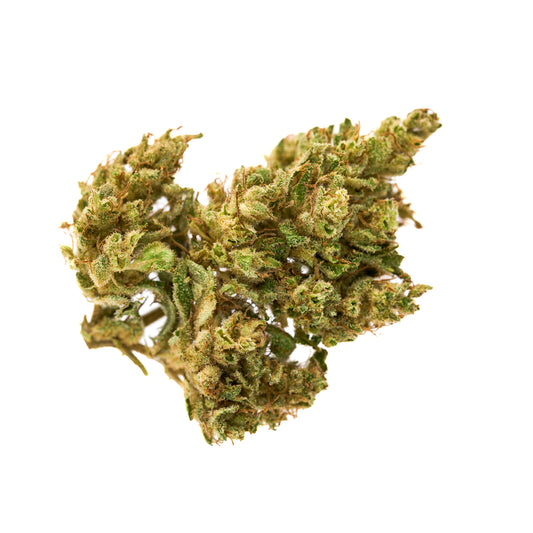
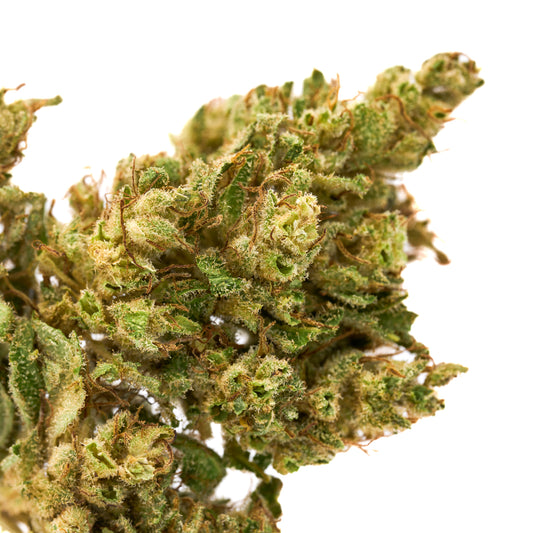
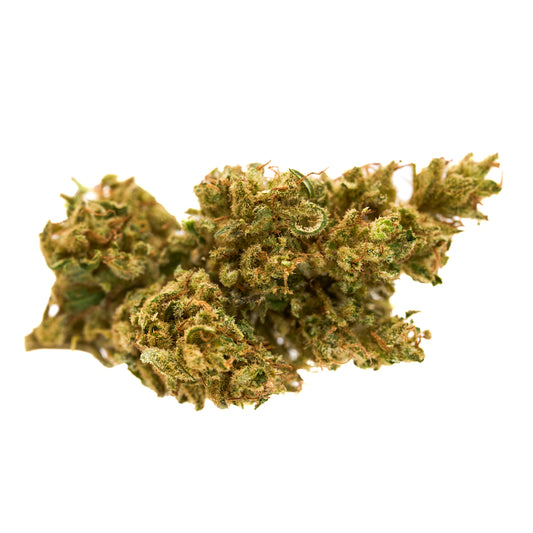
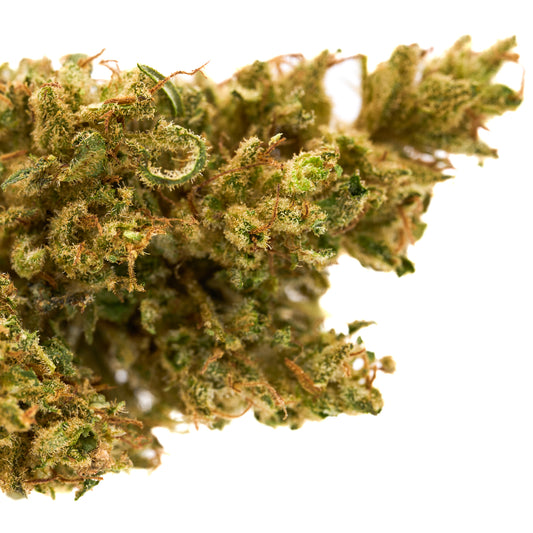
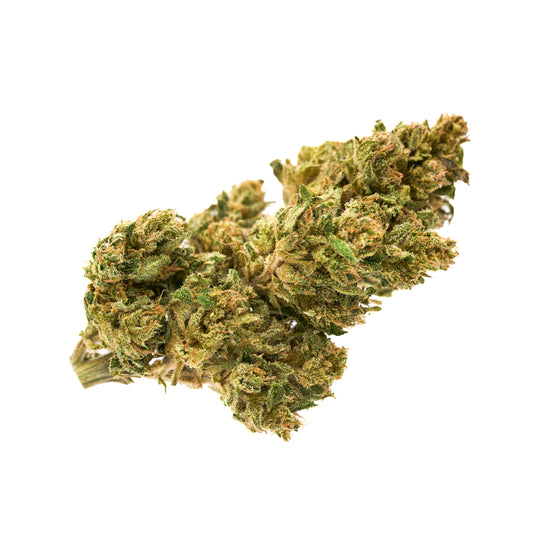
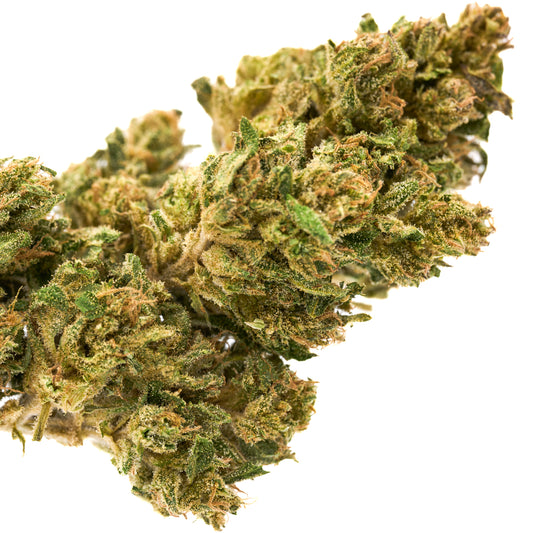



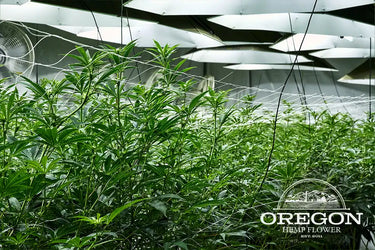

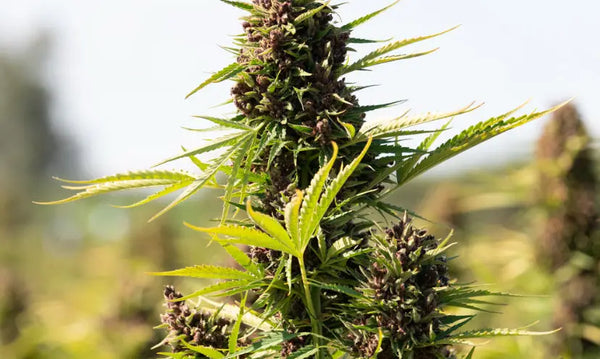
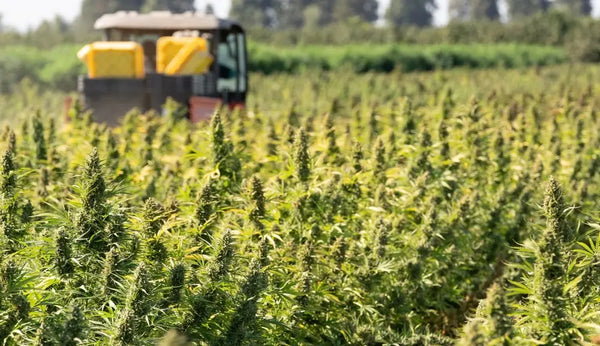
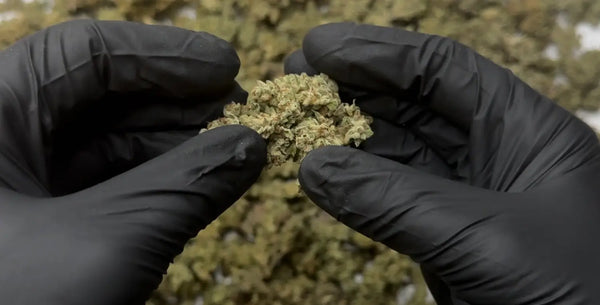
Leave a comment
Please note, comments need to be approved before they are published.